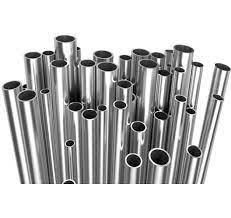Stainless Steel 316LN tubes stand as a testament to high-performance alloys, offering a unique combination of characteristics that make them indispensable across various industrial applications. This article unveils the key features and attributes that define Stainless Steel 316LN tubes, highlighting their role as a reliable and high-performance material in critical systems.
1. Alloy Composition:
- Stainless Steel 316LN tubes belong to the austenitic stainless steel family and are composed of chromium, nickel, molybdenum, and a significant nitrogen content. This alloy composition contributes to their exceptional corrosion resistance and high-temperature stability.
2. Corrosion Resistance:
- One of the defining features of Stainless Steel 316LN tubes is their outstanding corrosion resistance. This makes them well-suited for applications in aggressive and corrosive environments, such as chemical processing, marine, and offshore industries.
3. Nitrogen Alloying for Strength:
- The inclusion of nitrogen in the alloy enhances the mechanical properties of Stainless Steel 316LN tubes. This nitrogen alloying contributes to increased strength, making the tubes robust and resilient in high-stress applications.
4. High-Temperature Performance:
- Stainless Steel 316LN tubes exhibit excellent stability at elevated temperatures, making them ideal for applications in heat exchangers, boiler systems, and other high-temperature environments prevalent in industries like power generation.
5. Formability and Weldability:
- These tubes offer good formability, allowing for versatile use in various fabrication processes. Additionally, Stainless Steel 316LN tubes are readily weldable, facilitating ease of installation and integration into complex systems.
6. Resistance to Stress Corrosion Cracking:
- Stainless Steel 316LN tubes demonstrate resistance to stress corrosion cracking, a critical feature for applications subjected to both corrosive environments and mechanical stresses.
7. Biocompatibility:
- In the medical and pharmaceutical industries, the biocompatibility of Stainless Steel 316LN tubes is a valuable characteristic. This makes them suitable for applications involving medical devices and equipment.
8. Precision in Manufacturing:
- Modern manufacturing techniques ensure precision in the dimensions and consistency of Stainless Steel 316LN tubes. This precision is vital for seamless integration into various systems and applications.
9. Versatility in Applications:
- Stainless Steel 316LN tubes find applications across diverse industries, including chemical processing, oil and gas, power generation, and medical devices. Their versatility stems from a combination of corrosion resistance, strength, and high-temperature performance.
10. Compliance with Standards:
- Stainless Steel 316LN tubes adhere to industry standards, ensuring quality, reliability, and compatibility with established norms set by organizations such as ASTM and ASME.
In conclusion, Stainless Steel 316LN tubes exhibit a remarkable array of characteristics that position them as high-performance alloys. Their corrosion resistance, strength, and versatility make them integral components in critical systems across industries. As the demand for materials capable of withstanding diverse and challenging conditions continues, Stainless Steel 316LN tubes remain at the forefront, providing reliable solutions for various industrial applications.


